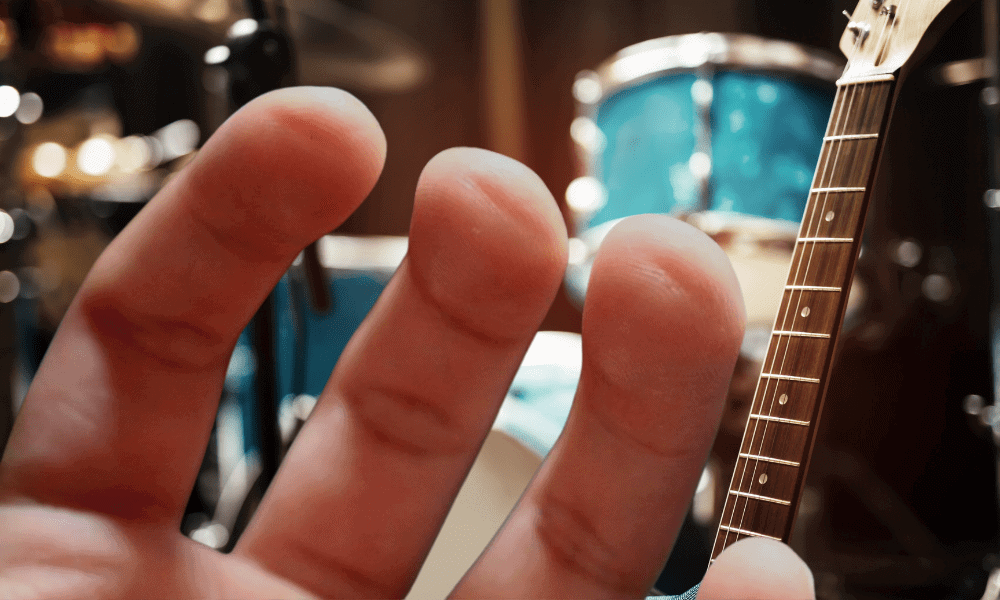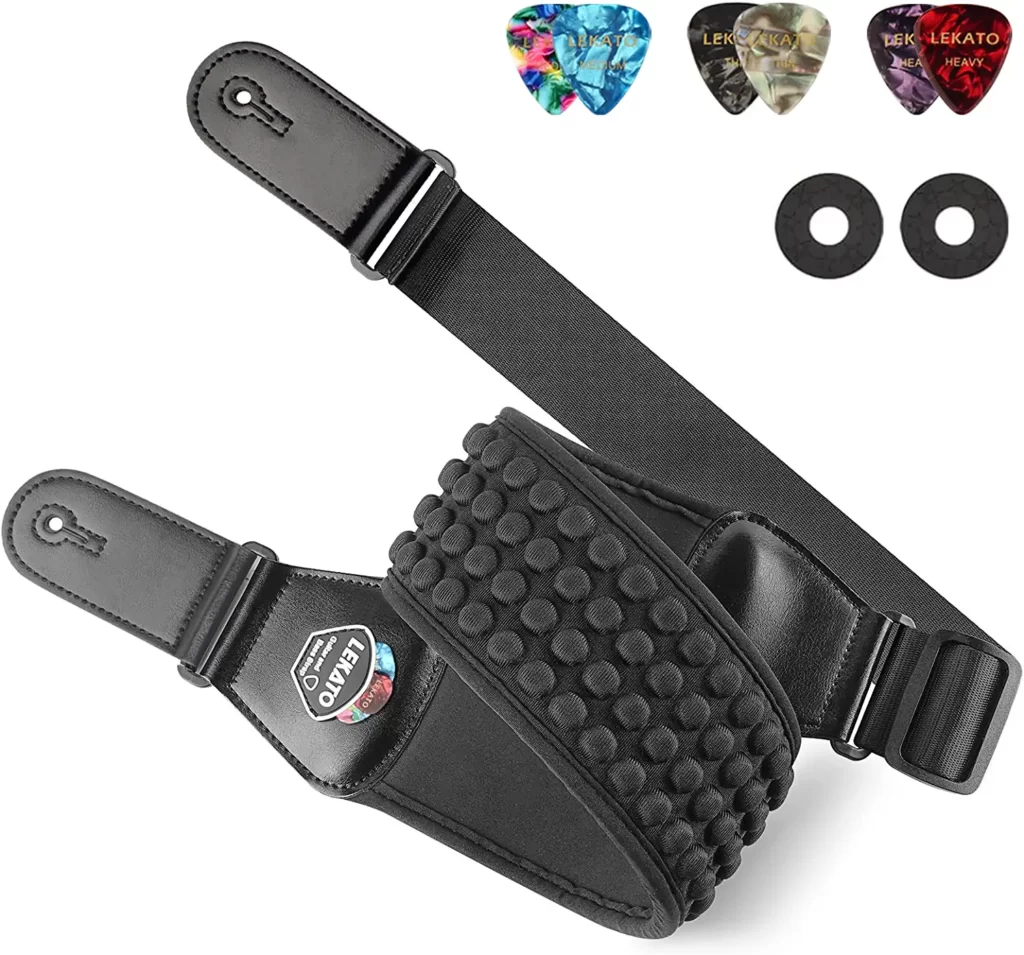Preventing Guitar Injuries. This is an extremely important topic for all players of the six strings, but in truth, many only worry about it when they are already injured. And then it might be too late to do anything about it, even though it might be reversible in some cases.
When it comes to injuries, the most efficient way to treat them is prevention. Better than any medical or physical therapy treatment is to take care to avoid getting hurt. In this article, you will learn a little more about these diseases caused by repetitive strain and discover exercises that help prevent injuries when playing the guitar.
Table of Contents
Repetitive Strain Injuries – RSI / RSD
Repetitive Strain Injuries, better known as RSI, are the most common type of injury among professional or non-professional musicians. Some years ago this type of injury started to have another denomination, which is linked to the work environment: WMSD (Work-Related Osteoarticular Diseases).
But more important than the name given is to understand what these conditions are and what causes them, so that you can work on preventing injuries when playing the guitar. Here are some famous diseases that fall into this category:
- Occupational Tenosynovitis – Pain or redness in the base of the thumb and wrist. You may also lose some of your strength in the thumb, making it more difficult to hold the pick.
- Stenosing Tenosynovitis (Trigger Finger) – Stiffness in the fingers, together with a “cracking” sound when you open or close your palm. May come with a small bump in the base of the fingers or even finger locking in some cases. The symptoms are more noticeable in the mornings.
- Carpal Tunnel Syndrome – Pain or weakness when trying to hold a guitar pick, together with numbness, shallowness, and in some cases, burning feeling in the fingers.
- Round Pronator Syndrome – Usually affects the thumb and the index finger. Can cause them to feel numb, weak or tingly.
- Synovial Cyst – Pain in the lower back, and one or both legs, together with some cramping in the legs. Usually related to bad playing posture or excessive stress on the back from holding a guitar on a strap.
These are just some of the diseases caused by repetitive strain. But how to identify them?
Identifying Guitar Injuries
First of all, it is clear that in order to accurately diagnose any type of illness, including the ones we are talking about, you need to see a doctor. But, long before that happens, you will already notice signs.
Your body is an almost amazing machine that senses when it is being overloaded at some point or specific area. Therefore, it will warn you before the injury appears. Watch for muscle fatigue and minor aches and pains that may not seem like anything unusual.
Also, pay close attention to the amount of force you are exerting when playing guitar. If you are getting too much tension (arm, finger, or any other body part), you are probably practicing the wrong way.
Another point to pay attention to is posture. Playing guitar with improper posture will lead to injury. The worst part is that you may not realize it if you don’t pay attention. Therefore, playing in front of a mirror is a good practice and helps in the perception of this problem.
The Most Common Symptoms of Guitar Injuries
There are many sources of pain that guitar players tend to experience. If you have one of these, you should start implementing some of the treatments suggested below and see a doctor as soon as possible. There’s a period in which injuries are reversible and can be treated with some minor adjustments, but you don’t want to miss this window. Here are the most common ones, together with their most probable cause:
Wrist Pain From Playing Guitar
Wrist pain in the fingering hand is usually the result of bad posture, lack of warm-ups, or trying hand-bending chords shape you are not ready for yet.
Sore Fingers or Fingertip Pain
Fingertip pain is very common among beginner guitar players or ones that just started playing a steel-stringed guitar.

The Strumming Fingers Pain
Very similar to wrist pain from playing guitar, if your strumming hand or thumb hurts, this is most probably because of a bad posture.
Shoulder Pain
This is very common among guitar players playing standing up. It’s likely that it’s a result of using a strap that is too thin, or placed too close to your neck.
Elbow Pain
Elbow pain, too, is usually the result of bad posture or not enough warm-ups.
How to Prevent Guitar Injuries
Here is a short list of how you can prevent yourself and your body from getting injured. This way, you will never have to stop playing your guitar for treatment:
Stretching and Warm-ups
Stretching is extremely necessary to prevent injury. Many guitar players underestimate the effectiveness of these exercises and this can end up in RSI. Stretch before and after guitar practice. And if you feel any discomfort, you can do the same during your study.
Try a Different Pick
I know it may sound weird at first, but thicker guitar picks or ergonomic picks can relieve a lot of stress from your wrist. Relieving this stress can help in eliminating wrist pain, and even prevent wrist injuries.

Consider a Wider Or Stress Relieving Guitar Strap
Wider guitar straps are known for spreading the weight of the guitar over a larger area, making it feel lighter, or at least less painful to hold for longer periods of time. There are straps that take it one step further, like this one from Lekato, which has a few properties I like. It’s wide, is made of a material that prevents sweat buildup, and has this type of 3D-shaped “sponge-bumps” that seem to spread the stress more evenly than other wide straps and help with shock absorption. I’m working on its review, but it does relief the stress and it’s a lot cheaper than it should’ve been.

Never Go Beyond Your Limits
Remember that your body has limits. Playing for many hours straight in rehearsals or recordings is never a good option. But since every person is different, find out how far you can go and don’t go beyond this point.
Do Physical Exercises
This will help you to increase your stamina as a whole. This way you will be able to play longer without getting injured.
Correct Your Posture
This task is not easy. Most probably you have had postural problems since you were in school. So, always study looking in the mirror and fit your lumbar spine to the back of the chair. If you can’t get results, see a physical therapist who works with GPR.
Conclusion
Proper posture and stress management can solve, and even prevent the vast majority of guitar injuries. Sometimes, all it takes is just a different type of pick or a different guitar strap to make a dramatic change in how playing guitar feels. If you feel pain, your safest bet would be to pause your practice until the pain is gone and see a doctor. If there’s a new type of pain you are not familiar with, see a doctor even sooner. There’s nothing more important than your health, and there’s nothing that will harm your motivation to play guitar more than an injury that could’ve been avoided.